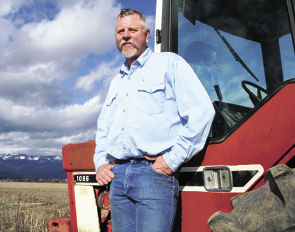From the Fields - Jim Morris

By Jim Morris, Siskiyou County farmer and rancher
We finally have a year with rain. From a rancher’s perspective, at this point it feels like the cloud of drought has lifted. In the hills, we’re starting to see things green up. But in Siskiyou County, we’re not greening up quite yet. It’s still freezing at night, but we know that feed is on the way.
Snow surveys have shown the snow and snow-water content in our valley are good. In most places it’s at 150% of average, with a few places that are just below average. I have friends and neighbors who over the last couple years have sold livestock. Some of them are multigenerational ranching families, and they have no cows. It’s been devastating over the last few years, but this year it feels like there’s a little bit of light at the end of the tunnel.
Because we are still living under the state water board’s emergency drought curtailment order, we need to have water-conservation crops. We were asked to cut 30% of our water use compared to our usage in 2020 or 2021. If we do that and write a plan, the state will allow us to irrigate. Even though it’s a wet year, we still have to cut 30%.
Last year and this year, the farmers grew water-conservation crops, which can be grain cut for hay. I’m experimenting. I put in some Kentucky bluegrass that I will harvest for seed. I’ll stop irrigating that in early July. Surface water and irrigated pastures may be curtailed very early on depending on the flow in the river. No matter how good of a snowpack or water year we have, until the governor rescinds his drought declaration, the state water board still can curtail us anytime. When our river is running at the magnitude over what they expect the flow to be, they will allow us to do a little livestock watering or groundwater recharge.




